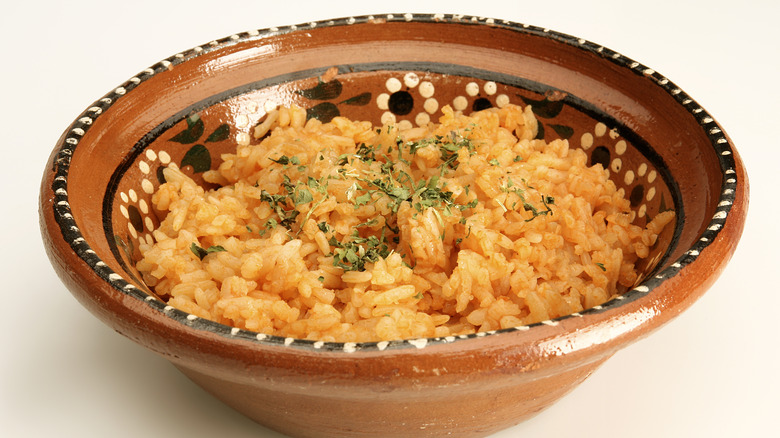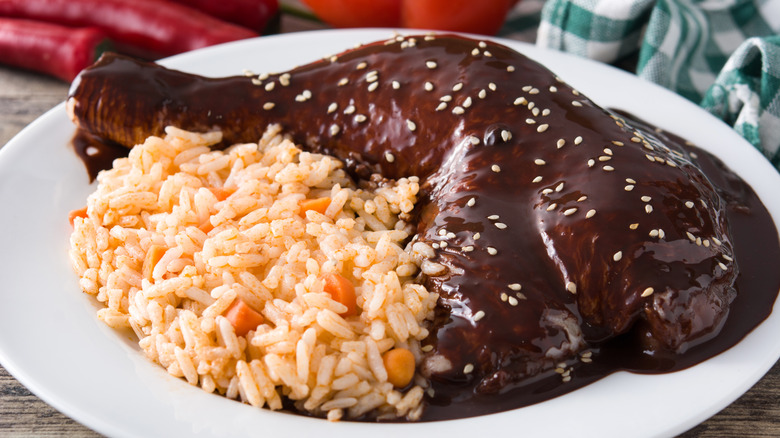Remember To Toast The Rice When Making Arroz Rojo
Corn may be the quintessential Mexican crop and foundation for most famous Mexican recipes, from tacos to enchiladas to chips and guacamole. But, order a plato fuerte at any Mexican restaurant, and it'll come with a generous helping of arroz rojo. Meaning "red rice," arroz rojo gets its red hue from tomatoes, incidentally another one of Mexico's native crops.
However, arroz rojo is so much more than just rice cooked in tomato sauce; it's a flavorful and comforting side dish that starts by toasting the rice in hot oil. A key technique in rice pilaf dishes around the world, toasting rice in oil before cooking enhances its flavor, decreases its starch content, increases its absorption capacity, and results in fluffier, separate grains. The toasted and nutty flavors in the rice mixed with the savoriness of the oil are the perfect complement to the salty and umami flavors of the traditional mixture of tomato and chicken stock cooking liquid.
Toasting rice is especially important for arroz rojo because it uses a puree of tomato, onion, and garlic for a thick, sticky cooking liquid with increased potential to create gooey rice. By toasting rice, you rid it of extra starches, giving it a greater capacity to absorb a thicker cooking liquid without sticking or clumping. By the same token, a more absorbent grain will also soak up all the flavors in the cooking liquid more effectively, so you'll get a burst of savory, umami, and aromatic goodness with each bite.
More tips for the tastiest arroz rojo
Apart from toasting the rice before cooking it, there are a few other tips to achieve the most flavorful and fluffy results. A traditional arroz rojo recipe calls for white long-grain rice, which is not only the most popular grain of rice in Mexican cooking but also the best type of rice for a fluffy and separate cooked texture. If you'd rather not use long-grain white rice, basmati and jasmine are long-grain alternatives.
Another important cooking hack for arroz rojo is adding cooking liquids in segments. Arroz rojo typically uses a mixture of stock and tomato puree. To maximize the rich tomato and aromatic flavors, you should first add the tomato puree to the toasted rice in the pot. The tomato puree and rice will come to a simmer and cook for a few minutes until partially absorbed, and then you'll add the remaining portion of cooking liquid.
For perfectly cooked added vegetables in your arroz rojo, add them in with the remaining cooking liquid before covering the rice. As the small proportion of stock rises through the rice, it'll also steam chopped raw veggies or reheat precooked frozen vegetables. If you want to increase the spice level for your arroz rojo, you can blend a fresh jalapeno into the tomato puree or dot the rice with pickled jalapeno halves when you add the chicken stock and other vegetables.

